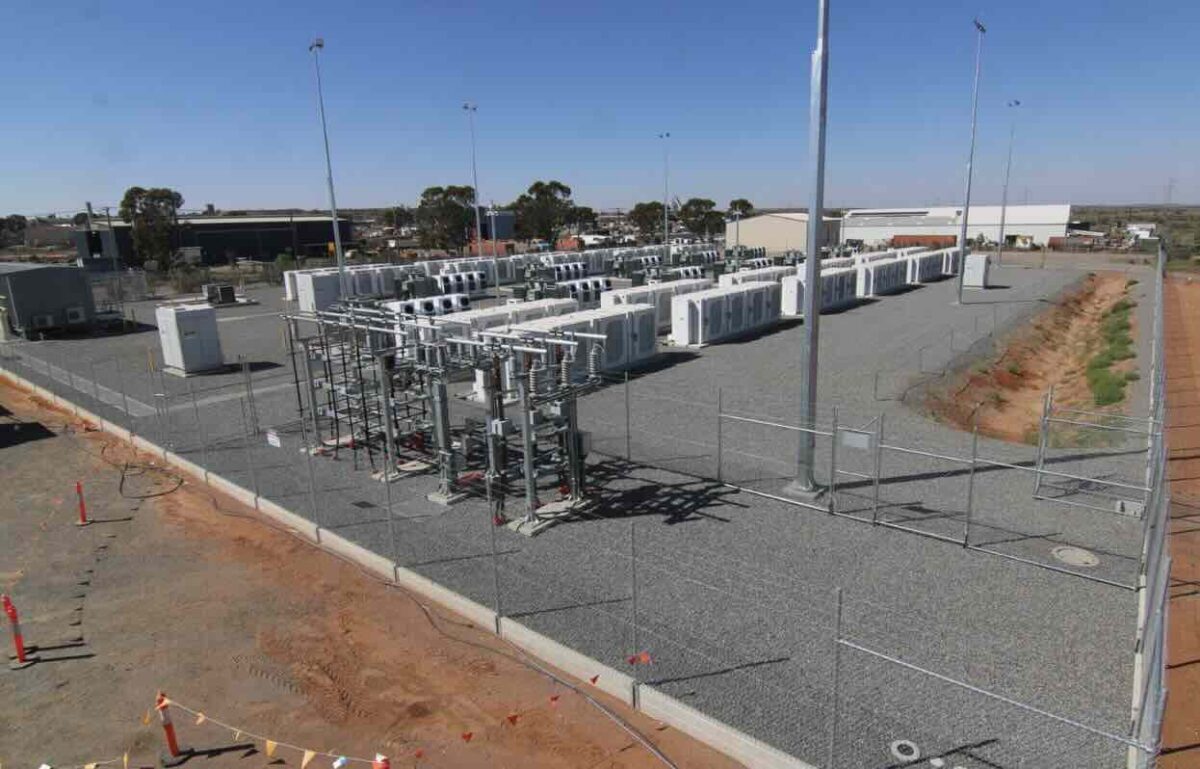Agreement has finally been reached to switch on the big battery in Broken Hill and enable it to do what it is supposed to do – to help provide power to the local community – more than a week after storms blew down seven transmission towers and cut the region off from the rest of the grid.
The deal was reached late on Friday, Renew Economy understands, just hours after we published a story questioning why the 50 MW, 50 MWh Broken Hill battery was not doing what is says on the box, or at least on its website – and helping to provide power in the event of a line failure.
The region has been hit be lengthy and repeated blackouts since the storm passed through – and also blew down towers and transmission lines in South Australia – early on Thursday, October 17.
The situation was made worse by the fact that one of two diesel generators was out of action, and the other kept tripping because it could not support the evening load, and because of various problems such as fuel pump issues.
See our Friday story: Broken Hill has a wind farm, a solar farm and a big battery. So, why are the lights out?
Both AGL and Transgrid declined to comment on Friday when Renew Economy asked about the status of the battery, which had been formally commissioned several months ago, albeit after nearly a year of delays.
On Saturday morning, a spokesperson for battery owner AGL said that agreement had been reached with Transgrid (the owner of the transmission network) to enable the Broken Hill battery to provide support to the transmission network.
“AGL has been in communication with Transgrid since the power supply was disrupted to resolve the significant technical challenges associated with connecting the BESS to the microgrid,” the statement said.
“AGL has completed work that will allow the safe operation of the battery in these circumstances to provide support to local communities.”
The agreement was confirmed on Saturday afternoon by state energy minister Penny Sharpe, who flew out to Broken Hill on Friday evening. “AGL’s battery is now being integrated into the network and should start charging today for discharge during the evening peak,” she said in a statement posted on LinkedIn.
Renew Economy understands that the battery will be charged by the diesel generators and excess rooftop solar – some of which had been directed to local mines to avoid disrupting the diesel generator.
Apparently it will not be charged by the 200 MW Silverton wind farm and the 53 MW Broken Hill solar farm that are located locally and also cut off from the rest of the grid.
Households on the local network supplying towns outside of Broken Hill, which are now being supplied by four small generators installed by Essential Energy, have been asked to switch off their solar supply (if they how to do it safely) to help keep the diesel generators stable.
It will also be interesting to find out why the work required to “allow the safe operation of the battery in these circumstances” had not been completed previously.
Had its features – which include so called grid forming inverters that in principal allow a battery to create a “mini grid” in such circumstances – not been fully commissioned? Had they simply not worked?
Had the silos of technical information – cited as a major issue in the difficult commissioning process in a “lessons learned” report published as a requirement of Australian Renewable Energy Agency funding – got in the way of delivering an essential service to the community, just when they really needed it?
It will be fascinating to follow the progress of the inevitable inquiries prompted by an embarrassed, an unhappy state Labor government and the regulators sent out to snap at the heels of the various stakeholders.
In the meantime, it will also be interesting to see how the battery works in “islanding” and grid forming mode in practice, and what lessons the whole shemozzle has for the industry going forward.
Broken Hill Foodland owner Lauren Colmer told AAP this week that her company had lost tens of thousands of dollars from dumping stock.
“In this day and age, you don’t mind a few blackouts here and there, and you go, okay, it gets fixed. But when it’s down for so long, because they don’t have any backup plans, that’s really not acceptable,” she said.
“We’ve got a solar farm out there, and we’ve got a wind farm out on the Adelaide Road, and we’ve got a wind farm out at Silverton, but we can’t access any of that sort of energy.
“Some of the locals are like, can we just plug into that? And I was like, well, that’d be nice. That’s not the way it works.”








